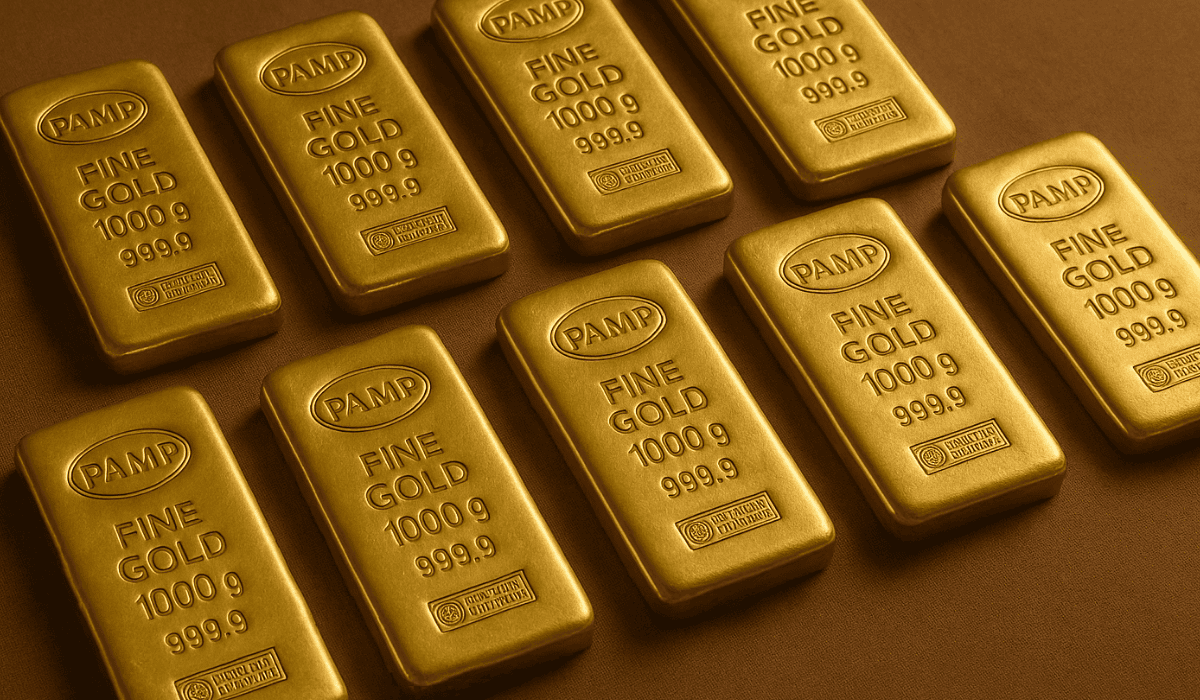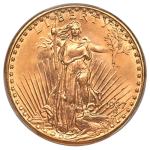With gold prices forecasted to reach as high as $3,500 to $4,000 per ounce in the coming years, many collectors are considering whether now is the right time to sell.
Gold bullion, whether in the form of bars or coins, represents a significant portion of private wealth holdings, but selling it involves more than just finding a buyer.
From understanding market pricing to navigating legal requirements, there are several important steps that can impact how much you ultimately receive.
This guide is designed for collectors and investors who are thinking about selling gold bullion and coins. Whether you’re liquidating part of a portfolio or cashing in on market highs, understanding the process is key to securing fair value and avoiding common mistakes.
Understanding Gold Bullion and Coins
What is Gold Bullion?
Gold bullion is physical gold that has been refined to a high purity level, typically at least 99.5%, and is used primarily for investment purposes. It comes in two main forms: bars and coins. Bars, or ingots, are often used for large-scale investments and meet international standards such as the London Bullion Market Association’s (LBMA) “Good Delivery” criteria, which ensure uniformity in weight and purity [1].
Bullion coins are minted by governments and have a specified weight and purity. Examples include the American Gold Eagle and the Canadian Gold Maple Leaf. These coins also carry legal tender status, though their market value is based on gold content rather than face value [7].
Bullion vs. Numismatic Coins
It’s important to distinguish between bullion and numismatic coins. Bullion coins are priced primarily based on their gold content and current market value. Numismatic coins, on the other hand, may carry a higher value due to factors like rarity, historical significance, and condition. When selling, understanding which type of coin you have helps determine the most appropriate venue and price expectations [5].
Where and How Gold Bullion Is Traded
Key Global Markets
Gold bullion is traded in several major markets. The London bullion market is one of the largest over-the-counter (OTC) markets where banks, refiners, and dealers conduct large-scale trades. Another key venue is COMEX, part of the New York Mercantile Exchange, where gold futures are bought and sold [1]. These markets play a critical role in determining global gold prices through daily benchmarks and trading activity.
Spot Price vs. Futures Contracts
The spot price of gold reflects the current market price for immediate delivery, while futures contracts are agreements to buy or sell gold at a future date and price. Spot prices are more relevant for selling physical bullion, as they reflect the cash value that buyers are willing to pay now. Futures markets, though more complex, influence overall pricing trends and investor sentiment [3].
Step-by-Step Guide: How to Sell Gold Bullion
Authenticate and Appraise Your Gold
Before selling, ensure your gold is genuine and accurately valued. For high-value items or large quantities, professional assaying or certification may be required. Most bullion bars will already have a stamped purity and weight, but coins may need additional appraisal, especially if they are older or potentially numismatic.
Choose the Right Selling Channel
There are several venues to consider when deciding how to sell gold bullion:
- Bullion Dealers: Offer near-spot prices and specialize in gold transactions. They are a reliable choice for both bars and coins.
- Online Platforms: Provide ease of access and transparency. Some platforms allow you to set your own price or accept live market bids.
- Banks: May purchase bullion in large quantities but often have stricter requirements and limited availability.
- Pawn Shops and Jewelers: Convenient but typically offer lower prices due to higher margins.
- Auction Houses: Ideal for rare or high-value items where competitive bidding can drive up the price.
- Peer-to-Peer Sales: Can yield higher profits but come with increased risks if not handled securely.
Understand Pricing and Premiums
Gold bullion prices are based on the current spot price, but other factors influence the final payout:
- Form: Coins often carry a premium over bars because of minting costs and demand.
- Weight: Larger bars may receive better per-ounce pricing due to economies of scale.
- Market Demand: High demand can increase premiums, especially for popular coins.
- Dealer Fees: Some buyers deduct a small percentage as a premium or processing fee.
Execute the Sale and Get Paid
Once you agree on a price, finalize the transaction. If selling online or by mail, use insured and trackable shipping. Always request an order confirmation and retain documentation. Payment is usually made via bank transfer, check, or in some cases, cash for local transactions.
Taxation and Legal Considerations
Capital Gains and VAT
Tax treatment varies by country. In many jurisdictions, profits from selling gold bullion may be subject to capital gains tax. In the UK, for example, investment-grade gold coins like the Britannia are exempt from VAT [7]. It’s important to keep records of your purchase price and sale proceeds to calculate potential tax liabilities.
Legal Tender Status of Bullion Coins
While bullion coins have a face value and are considered legal tender, their real market value is based on gold content. A Canadian Maple Leaf, for instance, has a face value of 50 CAD but contains gold worth far more [7].
When to Sell: Market Timing and Trends
Price Trends and Forecasts
Gold prices are influenced by a range of economic indicators. Analysts from InvestingHaven and other financial institutions predict that gold could reach $3,500 to $4,000 per ounce in the coming years due to ongoing global uncertainties [6]. Timing your sale during a market upswing can significantly boost returns.
Economic and Geopolitical Influences
Inflation rates, central bank policies, interest rates, and geopolitical tensions all impact gold prices. When uncertainty rises, gold often sees increased demand as a safe-haven asset [2].
Storage and Security Costs
Holding physical gold carries storage and insurance costs. These recurring expenses can erode returns over time, making it more attractive to sell when prices are high and the asset has appreciated in value [5].
Safety and Security Tips for Sellers
Work with Reputable Dealers
Always verify the legitimacy of dealers or platforms by checking for licenses, reviews, and professional affiliations. Established bullion dealers and financial institutions are generally safer than unverified online buyers or local shops with no track record.
Secure Shipping and Documentation
If shipping bullion, use fully insured and trackable services. Include documentation such as packing slips and order confirmations. Take photos of the packaging and contents for your records.
Avoiding Scams and Unsafe Transactions
Do not engage in anonymous sales or meet buyers in public spaces without security. Avoid platforms that lack clear buyer verification, and never send gold without first confirming the buyer’s credentials and payment process.
Selling Gold Coins: Special Considerations
Appraising Coin Value Beyond Metal Content
For collectors, the value of a coin may go well beyond its gold content. Rarity, condition, mint year, and historical significance all play a role. A professional numismatist or coin dealer can help determine the true market value of collectible coins.
Choosing the Right Venue for Selling Coins
Rare or collectible coins are best sold through auction houses or specialized numismatic dealers. Standard bullion coins like the American Eagle are more efficiently sold to bullion dealers who focus on metal value and liquidity.
Smart Selling Starts with Preparation
Knowing how to sell gold bullion or coins requires a combination of market knowledge, timing, and careful planning. Whether you’re selling bars or minted coins, start by understanding what you own and how much it’s worth. Evaluate the best selling channels for your needs, from dealers to online platforms to auctions.
Stay informed about gold price trends and economic signals to time your sale for maximum profit. Always prioritize safety by working with reputable buyers and using secure methods for shipping and payment. And don’t overlook the legal and tax aspects, which can affect your net proceeds. With the right approach, you can sell your gold bullion and coins with confidence and achieve the best possible return.





